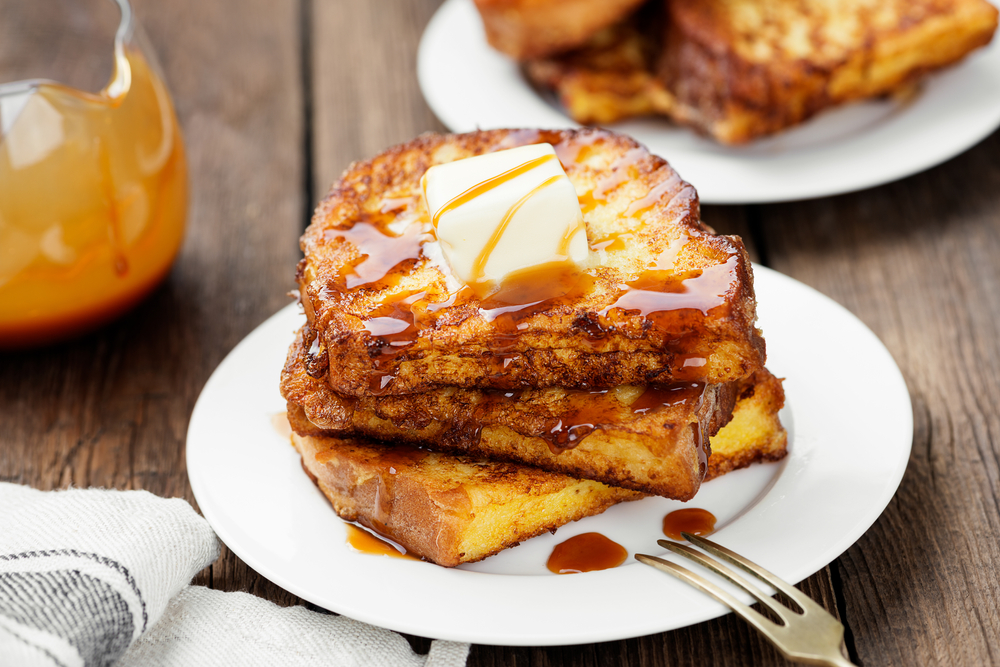

Contrary to what its presence on the menus of gourmet restaurants might suggest, pain perdu is basically a dish made from stale bread. Soaked in a mixture of milk and egg, this leftover bread initially lost (hence its name) found a second life once cooked.
A first mention of these revisited remains appears under the Roman Empire, the recipe then implies a cooking by frying and the honey replaced the current sugar. From the 13th to the 15th century, variants, always based on bread remains, are mentioned in different cookbooks but it is in the 16th century that this kind of doughnut gains its letters of nobility by being served at the table of Henri IV.
The fact that the King was particularly fond of it made it a success among the French aristocracy who, while traveling, exported it all over the world and especially to the United States where it is called "French toast".
It should be noted that initially the term "French" did not mean "Français" but "sliced" (derived from Old Irish). The good reputation of the French cuisine favored its success, the adjective was kept and, gradually, assimilated to France even if the paternity of the pain perdu in the country of Auguste Escoffier is not certain.
If this greedy dessert is mostly made of bread or brioche, its preparation and the ingredient covering it varies a lot: sugar, honey, maple syrup, salted butter caramel, vanilla ice cream, jam, custard... There is something for all tastes and even for lovers of salty flavors because, for a few years now, it is not uncommon to enjoy pain perdu outside the last part of the meal.
In Turkey, the "Kizartma Ekmek" is eaten for breakfast and is cooked in oil and not butter. In terms of names, there are also many variations depending on where it is eaten. We speak of "golden bread” in Canada, "won bread” in the Netherlands and, in England, "bread and butter pudding". In France, the north favors the terms "pain crotté" (crusty bread) or "pain ferré" (iron bread) where, in Charente, it is called soupe-rousse. Finally, Normandy has a version flambéed with pommeau and apple jam.
Whatever the recipe, the gustatory pleasure is guaranteed! Bon appétit.
Valérie from Comme des Français
----
To stay in the gourmet theme